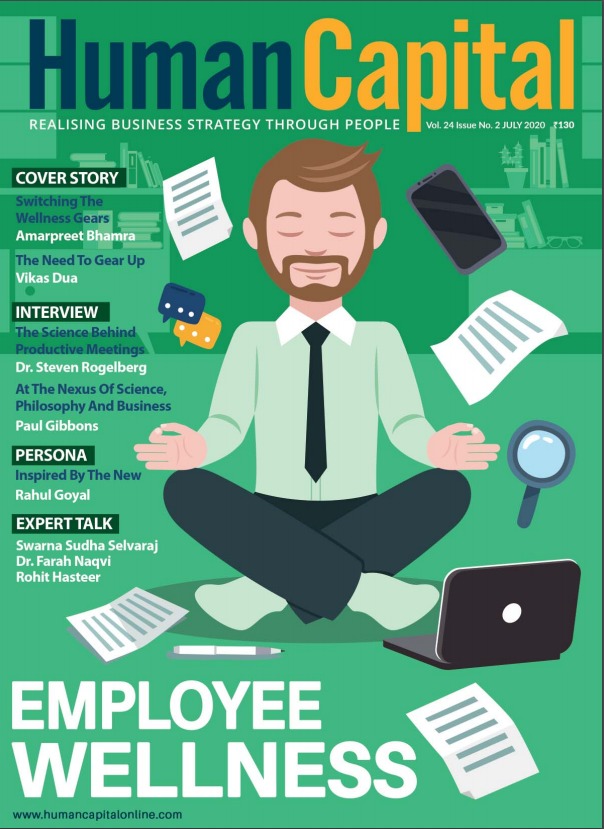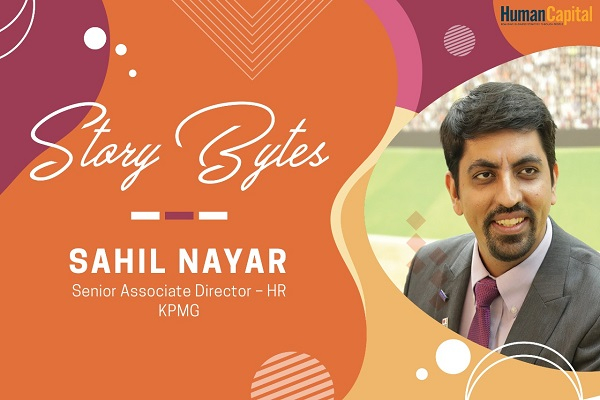The responsibility of wellbeing is with the self, family, organisation, and community as we prepare to coexist with COVID-19.
The birthdays and anniversaries celebrated together with friends and families in January, February and March of this year are historical and memorable moments because those who had these occasions after the lockdowns have only had quarantine celebrations digitally. In fact, many did not celebrate these events at all. Does this have to do something with wellbeing? Well, you know the answer.
Mobility is restricted during this global crisis, and human beings have been staying in the same place for a very long time, not because of their choice but out of compulsion. Psychologically, human beings like to do things out of their own free will. We come across situations in which people around us perform difficult activities easily and willingly if they are not forced to do so. However, when forced, even if the activity is simple, there is a high probability that mistakes will occur.
We are seeing a global crisis that has forced over 2.5 billion people in the workforce to work remotely. This crisis has already started creating extreme implications for the business sectors, especially in terms of managing costs and optimising the performance of their workforce.
Governments and organisations have created a charter on the wellbeing of people to make sure that possible support is provided to everyone so they can manage this situation and come out of it successfully.
The Wellbeing Charter
A common trend seen across organisations is the three-phased approach towards managing the wellbeing of employees:
1. During the crisis
2. Return to work
3. Long-term plan
All of these wellbeing activities fall under these four broad categories:
1. Financial
2. Physical
3. Mental
4. Social
Physical safety has been the most important category in the first phase, with extensions being provided for remote work and activities being conducted to ensure the work areas for those who are returning to work are highly sanitised. There were several videos of children and young adults celebrating the opening of food joints KFC and McDonald’s in the UK last month. Employees of these food joints were assured of workplace safety by adopting many “contactless” delivery approaches.
Amongst many other commonly heard words, “furlough” and “layoffs” have become prevalent. There are organisations that are supporting employees with full payment of their salaries even though they are in furlough. Specific advances and special relief funds are being provided for employees to manage their urgent expenses. Not many times do we hear about senior executives accepting pay cuts, but this was also gracefully done by leaders.
Virtual coffee connects on video have been part of the employee engagement and connection activities to support the mental wellbeing of employees. Multiple sessions on mental wellbeing by experts, services from trained counsellors, weekly engagements between team members and touchpoints of decision-makers to support with any quick decisions have all been in place across organisations as services for employees and their families. As I write this, I’m visualising those moments when we have seen employees joining sessions as families along with their children.
Organisations have come together to appreciate health care workers together and offer community support, and technology companies have also created digital solutions to the problems faced for helping the government in managing the pandemic.
As organisations get ready to welcome back more employees into workspaces and also implement their long-term plans, it is important that they don’t go for a typical broader restructuring of policies, processes and systems, but instead have a segmented approach for customisation at a policy level too.
COVID Customisations
We are slowly moving ahead from all our short-term activities to longterm strategic direction to cope with the current situation and get businesses back on track. Needless to say, global organisations are also customising their plans based on the situations that every country is in.
Best Buy has transformed its process of posting company news in the elevators of its headquarters, previously called “The Lift”, into a digital posting now called “The Uplift”. Such simple yet thoughtful changes could create a lasting impression. This is a great example of customisation in communication that can be suitable for all employees. This is very innovative and brings to life the visual effect of the elevator even when looking at it in the digital mode.
With employees becoming jaded by information overload, especially on learning, wellbeing webinars and programmes, we found a way to publish an integrated employee engagement calendar in TCS UK, which is available on the social collaboration platform for all employees. This has increased the engagement of employees and has brought customised engagement based on the interest of the employees.
Whether it is infrastructure or the internet that is going to replace the travel and petrol allowances or the hikes and promotions that will be withheld, offering transparency and customisable benefit options for employees to choose from, based on their personal requirements, might help employees in managing their wellbeing and also support their coworkers and families
Special care to vulnerable employees could be an extended service, as there may be situations that could arise where a lack of this might lead to wellbeing issues.
Creative flexi-working policies that emerged in the gig economy are going to provide customisable options for employees to choose from. I would not be surprised if, in line with the “leave sharing” scheme, there may be a “salary sharing” scheme involving employees willingly supporting other colleagues of theirs who are laid off, mainly in sectors where layoffs are expected to extend over a longer time.
Beyond all this, the effort to keep in touch and celebrate success must be a part of every small and big team’s agenda to stay connected and celebrate. Creating these “throwback moments” is critical in ensuring the wellbeing of an employee.
A Joint Responsibility
If John does not make an effort to connect with his friends or his organisation to seek help when he needs it, it may lead to compromising his own wellbeing and that of his loved ones.
If 6-year-old Preetham needs more attention from his parents, and his parents are working very hard without even realising that Preethan needs attention, this could also create issues in wellbeing. A work-life balance and a commitment to it as a family would be essential.
If Jeanette was seeking help but could not find out where she needed to reach out in her organisation, then it could lead to wellbeing issues not only for Jeanette but also for her colleagues, as there is lack of clear, concise, and transparent communication.
If Martinez fell sick and was considered a COVID-19 case by the community, and they felt Martinez could be dangerous and were without empathy, this could also lead to wellbeing issues.
The responsibility of wellbeing is with the self, family, organisation, and community as we prepare to coexist with COVID-19. Self, of course, has the highest responsibility to stay calm and leverage resources, as and when required, to stay happy and keep growing.

Are you comfortable working with dispersed colleagues?
Trending
-
SBI General Insurance Launches Digital Health Campaign
-
CredR Rolls Out 'Life Happens' Leave For Its Employees
-
Meesho Announces 30-Week Gender-Neutral Parental Leave Policy
-
Microsoft Unveils Tech Resilience Curriculum To Foster An Inclusive Future
-
60% Indian Professionals Looking For Job Change Due To COVID: Survey
-
SpringPeople And Siemens Collaborate For Digital Transformation Push
-
86% Professionals Believe Hybrid Work Is Essential For Work Life Balance: Report
-
Almost 1 In Every 3 People's Personal Life Affected Due To Work Stress
-
Meesho Rolls Out Reset And Recharge Policy For Employees
-
80% Of Talent Leaders & Academics Say Pandemic Changed Skill Needs For Youth: Report
-
Hero Electric Rolls Out 'Hero Care' Program For Employees
-
Human Capital In Collaboration With ASSOCHAM Hosts Virtual Conference
-
IKEA India, Tata STRIVE Collaborate To Create Employability And Entrepreneurship Opportunities
-
SAP India, Microsoft Launch Tech Skilling Program for Young Women
-
DXC Technology, NASSCOM Collaborate For Employability Skills Program
-
Lenskart To Hire Over 2000 Employees Across India By 2022
-
Mindtree Launches Learn-and-Earn Program
-
Tata AIA Extends 'Raksha Ka Teeka' To Its Employees
-
Swadesh Behera Is The New CPO Of Titan
-
NetConnect Global Plans To Recruit 5000 Tech Professionals In India
-
Hubhopper Plans To Hire 60% Of Indian Podcasters By 2022
-
Corporate India Needs More Women In Leadership Roles: Report
-
Aon to Invest $30 Million and Create 10,000 Apprenticeships by 2030
-
Tech Mahindra Launches ‘Gift a Career’ Initiative for Upskilling of Youth
-
40% Women Prefer Flexible Working Options in Post-COVID World: Survey
-
3 out of 4 companies believe they can effectively hire employees virtually: Report
-
Vodafone , CGI and NASSCOM Foundation launch digital skills platform
-
Odisha: Bank, postal employees to deliver cash for elderly, differently-abled persons
-
Skill India launches AI-based digital platform for "Skilled Workforce"
-
Hiring activity declines 6.73% in first quarter: Survey
-
70% startups impacted by COVID-19 pandemic
-
Bajaj Allianz Life ropes in Santanu Banerjee as CHRO
-
Over 70 Percent MSMEs look at cutting jobs to sustain businesses
-
93 Per Cent employees stressed about returning to office post-lockdown
-
Johnson & Johnson India announces family benefits for same gender partners
-
Indian firms turning friendly towards working mothers
-
Welspun India names Rajendra Mehta as new CHRO
-
Wipro partners with NASSCOM to launch Future Skills platform



Human Capital is niche media organisation for HR and Corporate. Our aim is to create an outstanding user experience for all our clients, readers, employers and employees through inspiring, industry-leading content pieces in the form of case studies, analysis, expert reports, authored articles and blogs. We cover topics such as talent acquisition, learning and development, diversity and inclusion, leadership, compensation, recruitment and many more.
Subscribe Now











































Comment